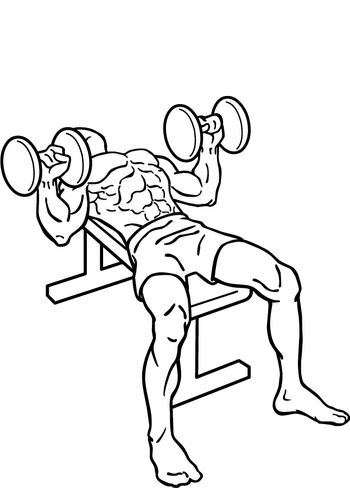
English: an exercise of chest (Photo credit: Wikipedia)
16.02.14
I continued the CCMA self-protection programme with my client, focusing more on hard skill development. Besides our pre-training discussion on the initial session, I regularly supply my client with links to soft skills resources and send him correspondence on aspects relating to personal security. This is an ongoing process and although it underlines our self-defence training, the most efficient use of our one hour one-to-ones is in physical training. Such training prioritizes direct front-line civilian unarmed self-defence tactics, but also overlaps into functional fitness.*
We began revising the fence. It is important that target familiarization and context appreciation is confirmed in a client. A student quickly adapts and develops under the superficial limitations of any drill or exercise. The problem being you cannot really ever replicate the reality of a real fight and you certainly cannot cater for all the possible scenarios. Therefore it is down to the coach to be very mindful of how he conditions and trains his client. Target familiarization involves making sure the client makes contact with the real targets he will be aiming for in a real fight. Obviously this cannot be done at full force, especially not in a pre-emptive strike situation where the target is just standing there. So, a compromise is met by having the client use the right tool – in this instance his hand – against the right target – usually the centre of mass on the front of the head, but without the acceleration required to make enough impact. Body mechanics can and should be observed, and the strike must not be pulled short of the target. We then overlapped the target familiarization with full impact into focus mitts.
Context appreciation describes the importance of being mindful of your training context. As the heart rate increases and a client gets warmed up into striking at the right moment it easy to forget the context. The fence must be maintained with the client appreciating his line of defence. He must not be tempted to move forward into his antagonist’s space during the pre-fight interview stage or to give up his line. He must develop any physical barrier he puts up i.e. his leading hand as a sensory tentacle, acting like a landmine which prompts his pre-emptive strike without hesitation. He must not start developing a static “guard” with his physical fence or fall into an obvious stance with his feet. An inexperienced fighter’s give away is betrayed by the way he adjusts his foot positioning prior to fighting. So, it is important to re-start each set of repetitions on a target as if it were a separate incident.
When it came to impact on the focus mitts, we looked at restrictive training using the wall for the straight hand strikes and also the hooks. We also looked at double strikes, exploring the reverse action of a cross and a hook – the rear straight elbow and backhand strike respectively. The client was able to relate to the sawing action incurred when performing the straight hand strike (cross/rear elbow).
We moved onto functional fitness strength exercises that he could use to enhance the techniques being taught today. I first went through using the heavy bag effectively so that my client could strike from different postures/restrictive positions. Then we discussed strength conditioning.
Here are a few suggestions I ran through using the equipment he had available at home:
Single arm dumbbell bench press – developing the correct muscle groups in the right direction for the cross.
Single arm bent over row – this works the body in the opposite direction to the single arm dumbbell bench press
Dumbbell swings – best known as a kettle bell exercise. This helps develop the explosive movement required for most combative body movements.
Barbell twists – Using an odd-ended barbell, this exercise develops core strength and its rotational movement is good for hook and backhand strike development.
Single arm dumbbell clean and jerk – this is another great explosive movement for developing power in combative movements.
Relevant Articles:
Foundation Conditioning Introduction
*I appreciate this term is currently loathed by many strength coaches who are part of the backlash against the numerous trendy exercise routines that have emerged in recent times. However, I use it to best distinguish between training methods that have a direct relevance to hard skill training and those with more general and abstract objectives.

